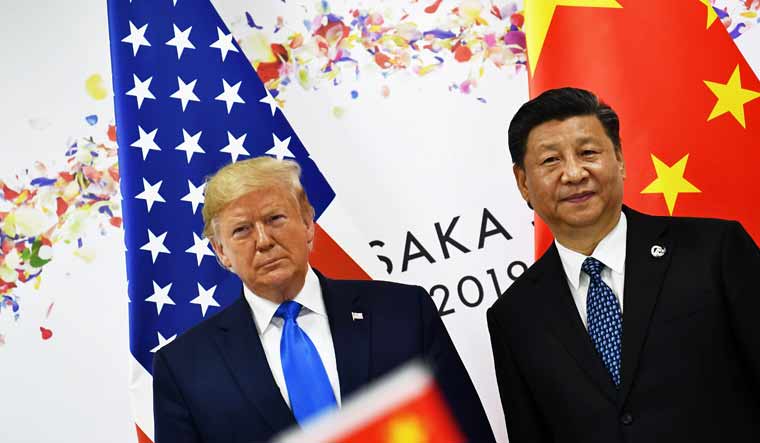
American President Donald Trump and his Chinese counterpart President Xi-Jinping talked about their free-falling trade spat at the sidelines of the G-20 summit in Osaka, Japan on June 29. The meeting provided a thaw between the countries as the two emerged content after the meeting, Trump telling reporters, “We discussed a lot of things, and we’re right back on track”.
Official Chinese news agency, Xinhua news reported that the the two countries agreed to “restart economic and trade consultations” based on “equality and mutual respect”.
The Sino-US trade war has been going on since January 2018, the two presidents alternating between suspending and restarting talks.
Although Trump used China as one of the major factors in his campaign for the 2016 US presidential elections, claiming that China was not a friend of the US, he has now reiterated several times that he and President Xi are indeed fast friends.
Their actions over the past two years however, would tell a different story.
The first move was made by Trump when he slapped tariffs on solar cells and washing machines in January 2018. The move was definitely criticised by China, but it did not spark any economic retaliation.
Since China did not make a retaliatory strike Trump believed it to be safe to increase the tariff on steel and aluminium imports to 25 per cent and 10 per cent respectively. Justifying it by highlighting the important role that a strong steel and aluminium industry plays in national security.
China retaliated with duties on $3 billion worth of American goods. This prompted the two countries to hold talks in May. However the talks tanked and subsequent efforts to bridge the differences failed.
In September, Trump announced 10 per cent tariffs on $200 billion worth of Chinese goods, with a future plan to up the rate to 25 per cent in early 2019. He promised extra tariffs on $267 billion worth of Chinese products if the Chinese retaliated. Unshaken by this, China in turn promised to tax $60 billion worth of US products.
December saw another effort to bridge the divide between the two as they met at another G20 summit in Argentina. The meet resulted in Trump delaying his proposed tariffs and both leaders agreeing to strike a trade deal within 90 days.
Since then Trump has said that the trade deal is “moving along very well” and that there has been “substantial progress”. However in May 2019, the trade deal fell apart, Trump claiming that the Chinese are trying to renegotiate the deal ad that he would increase duties if the Chinese continued to move “too slowly”.
To put his words to action, Trump imposed duties on $200 billion worth of Chinese goods increased from 10 to 25 per cent. In return, China hiked tariffs on $60 billion worth of US goods to 25 per cent on June 1. Trump also placed restrictions on Chinese phone company Huawei, stating that it posed a security threat.
Despite all these tariffs and restrictions, Chinese exports grew by 11.3 per cent in 2018. Although imports seem to have taken a hit with China’s may imports dropping by 8.5 per cent, the sharpest fall since July 2016.

No comments:
Post a Comment